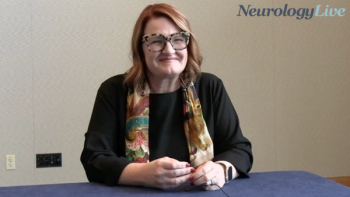
Oral Levodopa/Carbidopa Pump May Improve ON/OFF Time in Parkinson Disease
The pump, attached to a wearable retainer, continuously delivers the liquid medication with little to no adverse effects.
Administration of levodopa/carbidopa (LD/CD) via an intra-oral pump resulted in significantly improved ON time without dyskinesia as well as OFF time in patients with Parkinson disease (PD).
The findings were presented by C. Warren Olanow, MD, FRCPC, during an Emerging Science session at the
The nonrandomized, open-label study, which included 16 participants, assessed variability in plasma levodopa levels between the theDopaFuse pump and standard intermittent levodopa; the effect on motor function, including OFF time, ON time without severe dyskinesia, and ON time without any dyskinesia; as well as safety and tolerability of theDopaFuse system.
READ MORE:
Participants were evaluated over the course of 2 weeks: on Day 1, participants received their usual dose of standard LD/CD; on Day 2, participants received only continuous LD/CD with DopaFuse; and on Day 3, participants received a single morning dose of standard LD/CD followed by continuous delivery of LD/CD via the DopaFuse pump. Participants maintained the Day 3 dosing regimen from Days 4-14 and were reevaluated on Day 15.
Between Days 1 and 3, the fluctuation index assessing plasma levodopa levels improved significantly, with a fluctuation index of 2.15 on Day 1, 1.49 on Day 2, and 1.03 on Day 3 (P <.001). Compared to baseline, OFF time and ON time without severe dyskinesia significantly improved at Day 3 and maintained through Day 15 (3.23 hrs vs 1.63 hrs vs 1.51; P <.001 and 12.77 hrs vs 14.36 hrs vs 14.49 hrs; P = .001, respectively). ON time without any dyskinesia also improved (8.82 hrs vs 9.76 hrs vs 10.9 hrs; P <.02) as did scores on the UPDRS Part II (Day 1, 11.5 vs Day 15, 9.4; P = .016). Among a subset of participants whose OFF time at baseline was greater than 2 hours, OFF time was also statistically significantly improved at Day 3 and Day 15 (4.28 hrs vs 1.19 hrs vs 1.25 hrs; P <.001).
Overall, the therapy was safe and well-tolerated, with no drop outs, serious treatment-emergent adverse effects (AEs), clinically significant AEs, or deaths. Treatment-emergent AEs included buccal mucosal lesion, vomiting, nausea, headache, venipuncture hematoma, and orthostatic hypotension, all of which resolved in 1 to 5 days.
In terms of how participants faired with the retainer pump, Olanow said that “some patients thought it interfered with their speaking a little, but by the end of the study they all reported that they were speaking much better because the Parkinson [disease] was better controlled.”
“If this turns out to be what we hope it is, it will allow us to deliver levodopa without motor complications, without surgical procedures, and without risk of subcutaneous lesions or the need for an infusion pump,” Olanow concluded.
REFERENCE
Olanow CQ, McIntyre D, Matarazzo M, et al. Continuous delivery of levodopa/carbidopa using the intra-oral DopaFuse system: a safety, tolerability, PK, and efficacy trial. Presented at: AAN Annual Meeting; April 22-27, 2023; Boston, MA and Virtual.
Newsletter
Keep your finger on the pulse of neurology—subscribe to NeurologyLive for expert interviews, new data, and breakthrough treatment updates.


































